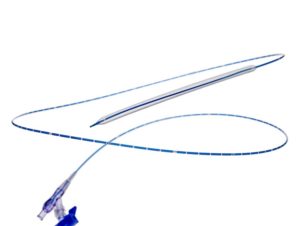
Today at the 2020 Leipzig Interventional Course (LINC; 28–31 January, Leipzig, Germany), BD announced that interim findings from the Lutonix below-the-knee (BTK) investigational device exemption (IDE) trial show positive safety results at three years for freedom from mortality, freedom from major amputation and amputation-free survival.
The clinical study is a prospective, global, multicentre, single-blind, randomised (2:1 randomisation), controlled trial comparing the Lutonix 014 drug-coated balloon (DCB) to percutaneous transluminal angioplasty (PTA) for the treatment of narrowed or obstructed arteries below the knee. The safety endpoints were assessed using a Kaplan-Meier analysis through 36 months for the intent-to-treat population, with 70% of patients having completed three-year follow up at the time of analysis. At 1,095 days, there is no significant difference in freedom from mortality (DCB: 81% and PTA: 81%, p=0.946), freedom from major amputation (DCB: 95.5% and PTA: 93.8%, p=0.268) or amputation-free survival (DCB: 77.8% and PTA: 77.8%, p=0.495).
The Lutonix 014 DCB demonstrated statistically improved primary efficacy at six months when compared to PTA (K-M analysis), with K-M curves merging at one year. There were no statistical differences in safety or efficacy beyond six months in this interim analysis. These results show that the Lutonix 014 DCB versus PTA provided statistically significant efficacy outcomes at six months with no observed safety issues out to three years.
“Critical limb ischemia (CLI) is an aggressive disease affecting approximately 3.4 million patients in the USA,” said JD Meler, vice president, Medical and Clinical Affairs at BD. “The interim long-term Lutonix BTK IDE safety and efficacy data presented at LINC is a step toward advancing CLI research and finding new treatment options for this difficult-to-treat disease.”
The Lutonix 014 DCB has been commercially available in Europe, Canada and Australia for treatment of the below-the-knee arteries in patients with CLI since 2013. The product is an investigational device in the USA.












